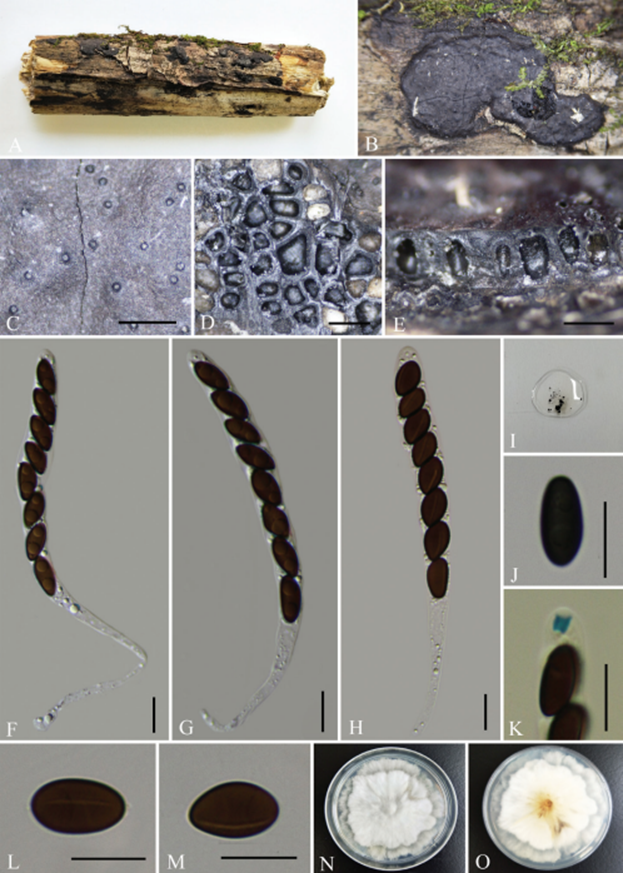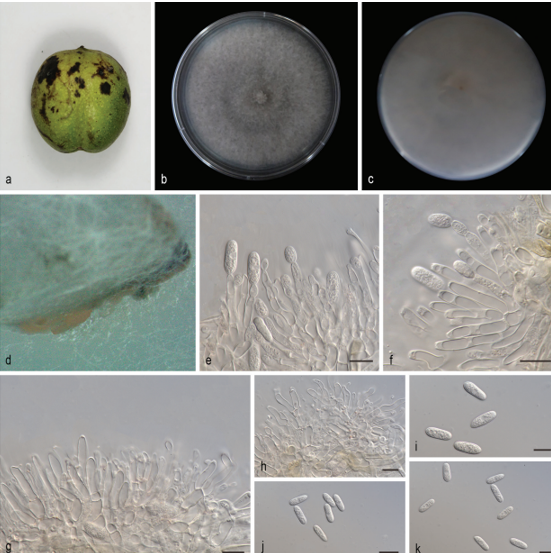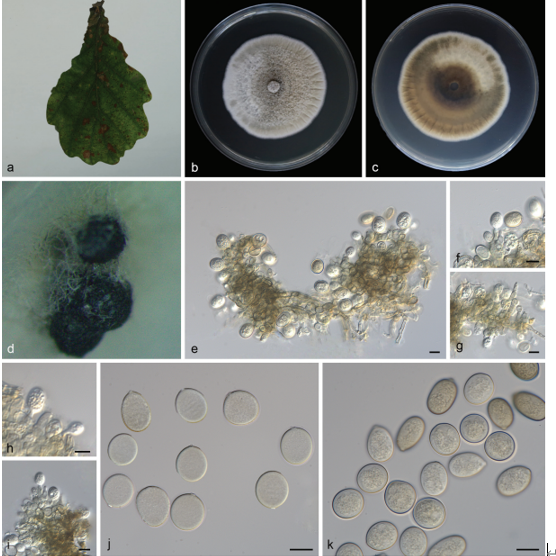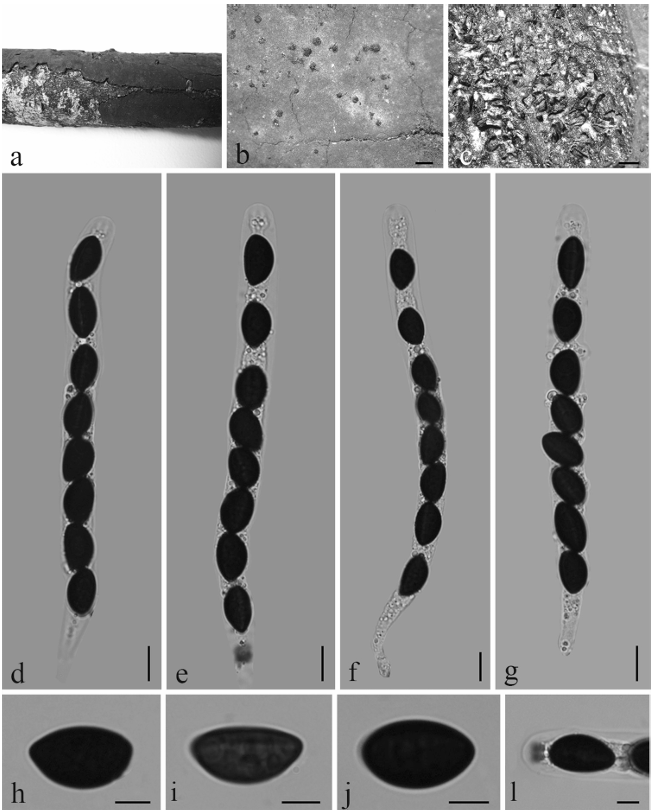Nemania cyclobalanopsina Y.H. Pi & Q.R. Li, sp. nov. 2021
MycoBank No: 840088
Holotype: GMBC0062, ex-type living culture; KUN-HKAS 112679, isotype).
Morphological description
Sexual morph: Stromata effused-pulvinate, orbicular to ellipsoid or irregularly lobed, 6–26 mm long × 3.5–10 mm wide × 0.5–1 mm thick, occasionally confluent into larger compound stromata, with steep to sloping margins; surface light blackish, slightly blood colour; outer crust carbonaceous; interior black, entire tissue carbonaceous around the perithecia; mature stromata lacking KOH-extractable pigments. Perithecia 0.2–0.3 mm diam. × 0.38–0.46 mm high, subglobose obovoid or tubular. Ostioles higher than stromatal surface and with coarsely rounded-papillate, black, without encircling disc. Asci 90–160 × 7–11 μm (av. = 125 × 9 μm, n = 30), 8-spored, unitunicate, cylindrical, long-stipitate, the spore-bearing parts 65–85 µm long, apically rounded with a J+, short-cylindrical to slightly tubular apical apparatus stained in Melzer’s Reagent, 1.5–2.5 × 2–3 µm (av. = 2 × 2.3 µm, n = 30). Ascospores 9–14 × 4.5–7.5 μm (av. = 11 × 6 μm, n = 30), uniseriate, unicellular, ellipsoid-inequilateral with broadly rounded ends, smooth, brown to dark brown, with a conspicuous, straight germ slit slightly less than spore-length to almost spore-length on the convex side; lacking a sheath and appendage; perispore indehiscent in 10% KOH.
Asexual morph: Undetermined.
Cultures: Colonies on PDA medium in size with a diameter of 6 cm after two weeks at 25 °C; the surface is white, intermediate thick, cottony, dense, with undulate or ring edge, flat, low, whitish-yellow, reverse of the colony yellow at the centre. Not sporulating on OA nor on PDA.
Habitat: on dead wood of C. glauca,
Distribution: China, Yunnan Province, Changning County, Lancang River Nature Reserve (25°52'17.40"N, 99°35'20.53"E, altitude: 1489 m),
GenBank Accession: its MW851882; rpb2 MW836058; tubulin MW836026; catin MW836039. Its MW851883 ; rpb2 MW836051; tubulin MW836025 ; catin MW836038.
Notes: In our phylogenetic analyses, N. cyclobalanopsina grouped with N. diffusa (100% ML, 1 BYPP, Fig. 1). Morphologically, N. cyclobalanopsina differs from N. diffusa by its blackish stromatal surfaces and coarsely rounded-papillate ostioles. Moreover, N. diffusa has larger perithecia (0.3–0.6 × 0.4–0.8 mm) (Granmo et al. 1999; Ju and Rogers 2002). In the multi-gene phylogenetic analysis, N. cyclobalanopsina appeared in a separate branch which is distinct from N. diffusa (Fig. 1). Moreover, there is a 3% difference in ITS sequences between N. diffusa and N. cyclobalanopsina. (Vu et al. 2019; Jeewon and Hyde 2016).
Reference: [1] Song, Y. J. , & Li, S. Q. . (2008). A taxonomic study of chinese nematogmus species (araneae, linyphiidae). Organisms, diversity, & evolution(4), 8.

Nemania cyclobalanopsina (GMB0062, holotype) A type material B, C stromata on the surface of host D transverse sections of stromata E longitudinal sections of stromata F–H asci with ascospores I pigments in 10% KOH J ascospore with indehiscent perispore in 10% KOH K ascus apical apparatus (stained in Melzer’s Reagent) L, M ascospores N, O colonies on PDA (N-upper, O-lower). Scale bars: 0.5 mm (C–E); 10 μm (F–H, J–M).









